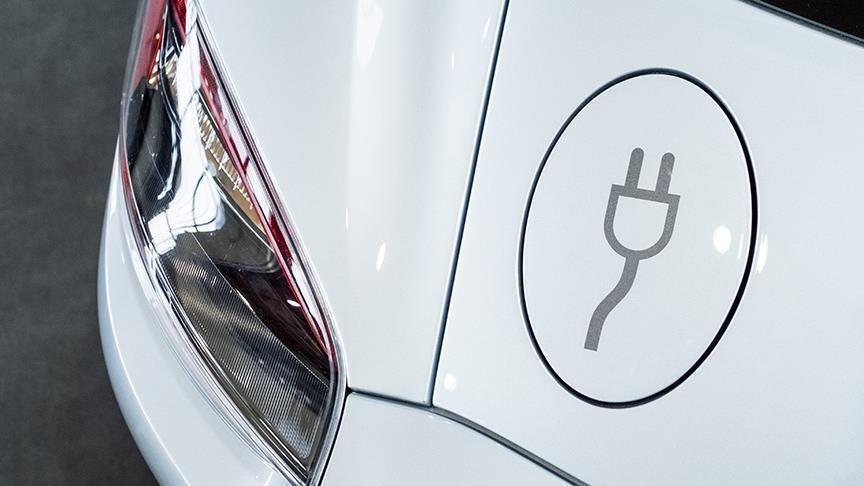- The Writer holds an MSc in Eurasian Political Economy & Energy from King’s College London and also an MA in European Studies from Sabancı University.
Penetration of electric vehicles (EVs) is on the increase all around the world and reflects a belief that this expansion on the road is a significant sign of greater sustainable mobility. The so-called coming revolution of EVs will greatly benefit the reduction in greenhouse gases with lower emissions and less air pollution. Nonetheless, the pace of change and the future prospect for EVs remains uncertain.
Despite significant growth in global stock levels, EVs annual growth levels worldwide are in decline. In 2014, the annual registered growth rate of EV ’s was 85 percent, and this volume decreased to 77 percent in 2015 and further tumbled to 60 percent in 2016.
Given the significant cost reductions in battery production, greater price competitiveness and further improvements in energy consumption, the decline in annual EV’s sale shows there is still a long way to go for them to dent the market of internal combustion engine vehicles.
With a high EV registration in 2016 and over 750 thousand new cars on the road, the EV stock surpassed two million cars worldwide. This represents a substantial increase over 2015 when the electric car stock stood at one million.
Norway has been the global leader in electric vehicle registration with approximately 30 percent of the global share, followed by the Netherlands and Sweden with 6 and 4 percent, respectively. While France and the U.K. each hold an almost 2 percent share of global electric vehicles market, China, on the other hand, is on a path to becoming the biggest electric car market with a 40 percent registry of all electric car sales globally in 2016.
The electric car market is undeniably influenced by major environmental policy decisions. To accelerate the numbers of vehicles in use, many municipalities opt to implement robust initiatives to help the transition to EVs. Some of these initiatives in recent years include favorable differentiated taxation, fuel economy regulations, as well as the introduction of subsidies.
The momentum gained through effective policy instruments are likely to continue to expand in the years to come. Some European Union policy decisions are a testament to the far-reaching public policy support for EV’s in transportation.
A Clean Mobility Package in 2017 and the EU Transport White Paper of 2011 are some examples of this support for EVs while indicating that conventionally fuelled cars will no longer have the same market share in Europe. These newly introduced regulations support the acceleration towards a sustainable transportation system through greater utilization of EV’s.
These policy tools are inextricably linked with environmental concerns with the aim to phase out internal combustion vehicle engines by the 2050’s. While outlining the roadmap for greater utilization of EV’s, the EU plans to meet global reduction targets set in Paris, reduce local pollution, and finally cut road traffic noise levels. By tightening emission standards through the introduction of low emission zones and with the recent diesel bans, the number of EV’s sales is set to increase particularly in Europe. But there is still a lack of sufficient charging infrastructure. This is likely to be one of the major impediments to the greater usage of EV’s, which policymakers need to consider.
Generation capacity and charging networks vary for EV’s. The issue of EV charging has been a major question mark for consumers over many years. Home charging, roadside charging, battery replacement, fast charging stations are some of the issues for current EV technology. The successful penetration of greater numbers of EV’s will only be strengthened with advanced planning of charging networks. Unless charging options are expanded, confidence in using EVs will remain low globally, and could eventually hamper demand.
Consequently, adequate generation capacity is a precondition to cope with increased EV’s penetration into the market. As the mileage range of EV’s increases and costs decline, the current insufficient charging stations at present needs to be resolved with greater deployment of infrastructure.
A number of renowned institutions forecast that the future of EV’s shows great divergence. The International Energy Agency projected that by 2025, the number of EV’s on the road would be between 40 to 70 million and by 2030, this volume would surpass 120 million. Bloomberg expects the sale of over 500 million EVs by 2040. In its most extreme case, Morgan Stanley projects a total of 1 billion EV’s sales by 2050. Given that only 0.2 percent of passenger cars sold around the globe were EV’s in 2016, the forecasts from various institutions, despite different approaches in their forecasting methodology, still does not reflect the reality on the ground and is unlikely to reach these projected levels in the decades to come.
Potential EV contributions to decarbonization and in the fight against climate change are evident. The synergy created through various policies would likely help the EV market evolve and gain strength as the technological breakthrough in battery costs decreases, emission controls gain pace, and the range of EVs increases. As a result, the ambitious governmental targets could increase the share of EVs in transportation. However, the pace of change, uncertainties surrounding sufficient charging infrastructure and the current high battery costs, act as an impediment to the greater deployment of EVs in comparison to fossil fuel-based cars in the foreseeable future.
- Opinions expressed in this piece are the author’s own and do not necessarily reflect Anadolu Agency's editorial policy.


